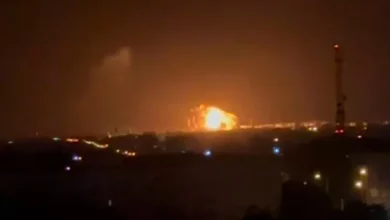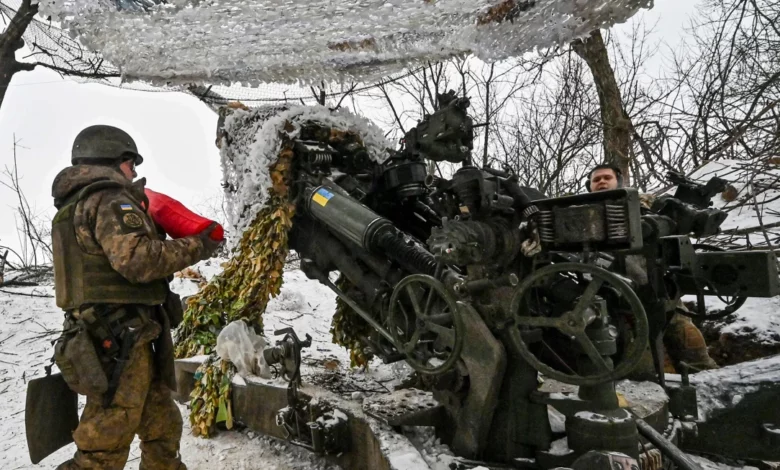
“My dad doesn’t come home. We are waiting for him. I’m waiting for my dad to come back,” the little boy said.
Holding a sign saying, “Fair Deadlines for Demobilization,” Antonina said her husband was currently serving in a mortar unit near Bakhmut, in eastern Ukraine. She has not seen him for five months and tries to rationalize his absence to Sasha.
“I tell my son that his dad is at work, he is in the military, he is earning money.”
Mobilization periods are currently open-ended, with no statutory cut-off. Antonina’s husband volunteered two years ago, just after Russia’s full-scale invasion. Now aged 43, he has served long enough, she told CNN.
“It is hard for my husband to endure this length of time on the ground, avoiding all the shells and doing everything he needs to do at the front line,” she said.
A short distance away from where the women were standing, lawmakers debated reforms to Ukraine’s mobilization rules, inside Kyiv’s heavily protected parliament building. A new law could be passed within a few weeks that is expected to pave the way for a significant increase in conscription numbers.
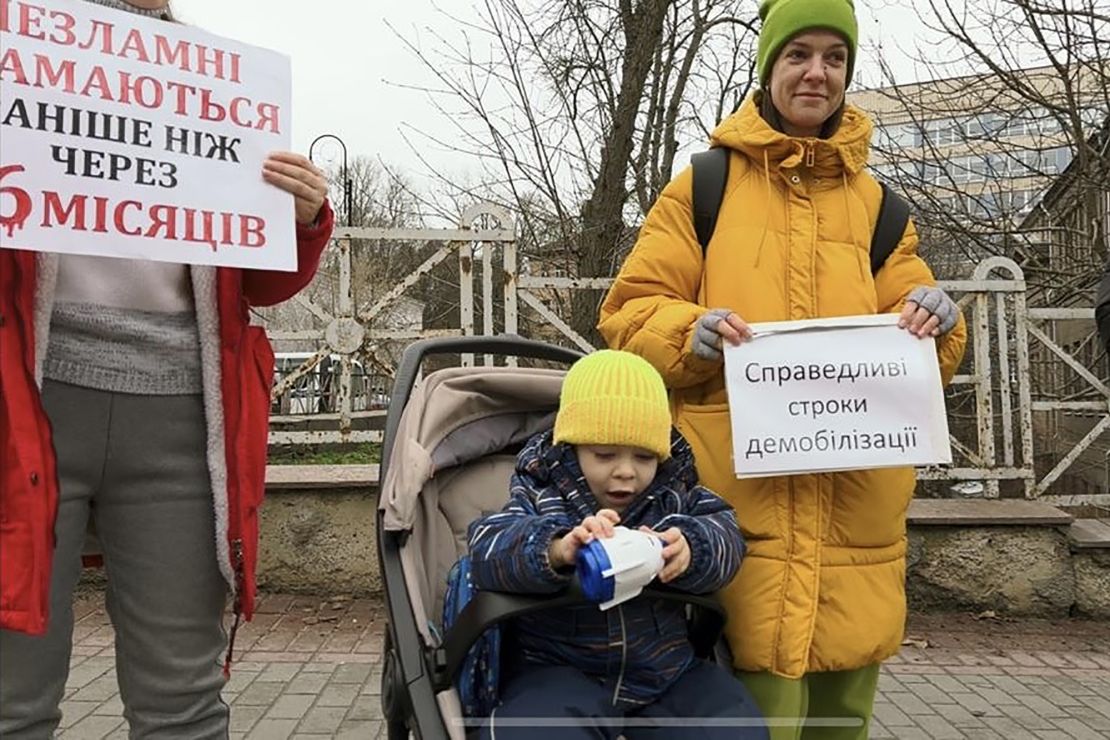
Ukraine’s manpower shortages in the war with Russia are back at the top of the agenda and reflect how the mood in the country has changed.
Ahead of last year’s counteroffensive, Ukraine was confident. “The time has come to take back what is ours,” said one highly produced video, published on the Telegram channel of then commander-in-chief of Ukraine’s Armed Forces, Valerii Zaluzhnyi.
Expectations were high that the job of rolling back Russia’s invaders, which had begun so successfully in the summer of 2022, could be re-started and maybe even completed by the end of 2023.
But Ukraine failed to make significant gains, as Russian defenses proved much harder to break down and as drones came to dominate the battlespace. Over the course of 2023, Russia – a country with three times as many people as Ukraine – increased its troop numbers in the occupied territories by almost a third, according to a London think tank.
In the past few weeks, the news has been getting worse for Kyiv. Moscow’s forces are advancing in several locations along the eastern front, and in the early hours of Saturday, generals announced they had withdrawn from Avdiivka, an industrial town in the southeast.
The feeling now is that not only do new soldiers need to step up, but there needs to be more of them as well.
“One way or another everybody should serve, it is our duty to defend our land, our families, our motherland. If you don’t want to fight, what kind of citizen are you?” a drone operator who goes by the call sign “Mac” said from eastern Ukraine, where he is serving with the 92nd Assault Brigade.
Mykola, who commands a Grad rocket launch system and is also currently stationed in the east, said he was 59 years old, which puts him just a year under the mobilization limit.
“All of Ukraine is at war, and each and every man who thinks he lives in Ukraine must go through it. It is irreversible. People here are tired,” he said.
Consensus on need for reform
Ukrainians have volunteered in large numbers since the start of Russia’s full-scale invasion two years ago. But the long lines seen at recruitment offices in the first half of 2022 are a thing of the past. A draft system exists to supplement the ranks of volunteers, but the government has long complained the system is dysfunctional, with state authorities failing to enforce mobilization rules.
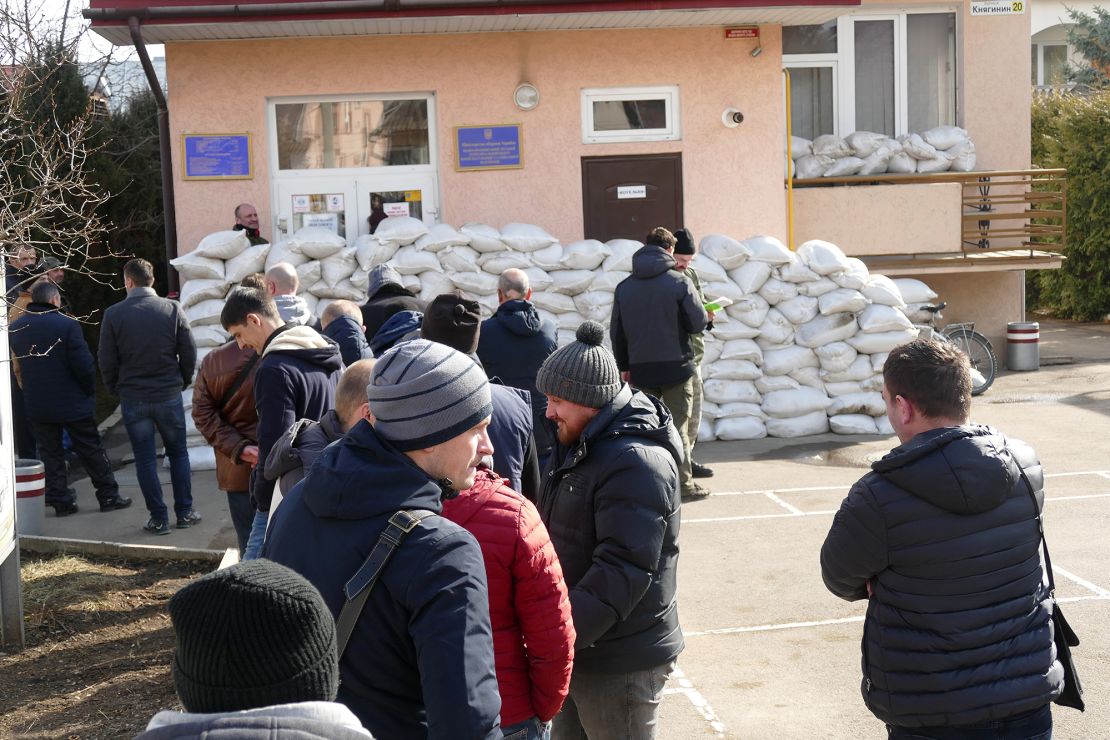
Eligibility to fight starts at 18 years old and ends at 60. In Ukraine, women can serve as well as men. However, the draft only applies to men aged 27 and above. Reforms under discussion in parliament include bringing the minimum age down to 25. That figure might still seem quite high, but Ukraine’s demographics are problematic. High emigration and low birth rates in the 1990s and 2000s mean the population distribution shows a pronounced contraction in the number of people currently aged in their 20s, compared to those in their 30s and 40s.
The centerpiece of the proposed legislation foresees all men of fighting age under a new obligation to register details of where they live as well as their employment situation. The idea is that a new central database will make the pool of potential draftees more visible to the armed forces, ensuring conscription is more transparent and more effective.
Failure to obey a draft order could mean tougher penalties, including possible suspension of a driver’s license or a bank account, though officials acknowledge the implementation of enforcement measures requires attention.
Last week, Ukraine’s police acknowledged that existing cases of draft avoidance have moved too slowly through the justice system. Of the 2,600 cases admitted in the past two years, a verdict has been reached in only 550. “The courts still need to do more to make people feel there is no possibility to avoid punishment for this crime,” a senior police official said.
Along the country’s western borders, Ukrainian authorities continue to stop men trying to leave the country illegally. Martial law requires all eligible servicemen to remain in Ukraine, though exemptions exist, including for single parents of young children or professional athletes.
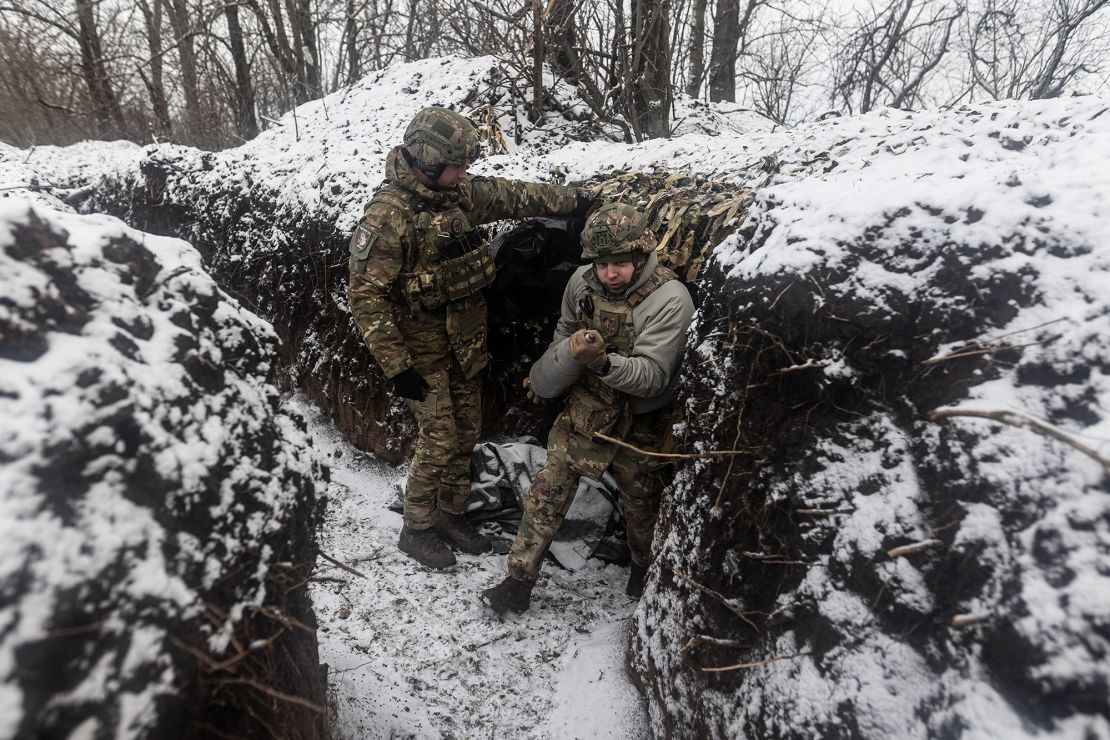
State Border Service of Ukraine (SBSU) spokesperson Andriy Demchenko told CNN that 50,000 citizens of Ukraine had been refused exit at the border during 2023, though he would not say how many of these were related to the draft.
The SBSU Facebook page regularly posts videos of detained men. Many are pictured with inflatable boats, or even simple rubber rings, caught after allegedly attempting river crossings to Hungary. Other videos show men discovered inside cars, often buried under bags, though one was found hidden inside a large box. One man was even filmed after having tried to pass himself off at the border as a woman, officials said.
Demchenko said punishment for such offenses tended to be a fine of up to UAH 8,500 ($220). Although the identities of all the men are hidden, at least part of the reason for publishing the videos appears to be to heap shame on those looking to flee.
Debate around numbers
For all the focus on reform, one big question remains: how many more soldiers does Ukraine need?
At the end of last year, differences between President Volodymyr Zelensky and his then-army chief Zaluzhnyi spilled into the open, when Zaluzhnyi apparently suggested a number the president felt was too high.
Though Zaluzhnyi denied he had specifically requested 500,000 new troops, the number became lodged in the public debate, and Zelensky took issue with it publicly, telling journalists at a press conference: “This is a very serious number. It is a question about people, about justice, about defense capabilities. It is also a financial question.”
Zaluzhnyi was dismissed earlier this month.
In an Op-Ed for CNN, published two days before he was replaced, the top general made clear his ongoing frustrations, calling out “the inability of state institutions in Ukraine to improve the manpower levels of our armed forces without the use of unpopular measures.”
Former Defense Minister Andriy Zagorodnyuk believes that further mobilization is essential. “Maybe not half a million, but still hundreds of thousands,” he said, adding that it should be “strategy-based – what we are going to do, rather than, ‘Oh, we need more people.’”
It is a message Zelensky appears to have given his new commander-in-chief, Oleksandr Syrskyi, as well, that he will only consider a hard request for new recruits when he sees a plan for the war through the rest of the year.
Publicly, the president continues to frame mobilization around an idea of justice.
“It is a question of how fair recruitment should be,” he told CNN’s Christiane Amanpour at the Munich Security Conference on Saturday. “The most important issue is rotation of the people who are very tired at the front line… Mobilization depends on how many you have at the front, how many reserves you have.”

The President’s Office believes it is as much about changes inside the armed forces as it is about increasing overall numbers. According to a Zelensky aide, of the almost 1 million Ukrainians mobilized, only 200,000 to 300,000 have served on the front line. The rest, he said pointedly, “are very far from the war,” adding it is up to the new army chief to change that before coming to Zelensky and asking for an increase in the draft.
Zagorodnyuk, the former defense minister, though careful not to say he thinks too many people are avoiding front-line service, agrees that reform inside the military is needed.
“The bureaucratic apparatus of the armed forces is a bit inflated. There are too many commands, there are too many administrative units, and so on,” he said.
Whatever number Sysrkyi eventually comes up with, it will not just be military and social factors that weigh on Zelensky’s mind. Paying for soldiers is expensive. At a press conference in December, the president said it took six taxpayers to support one soldier.
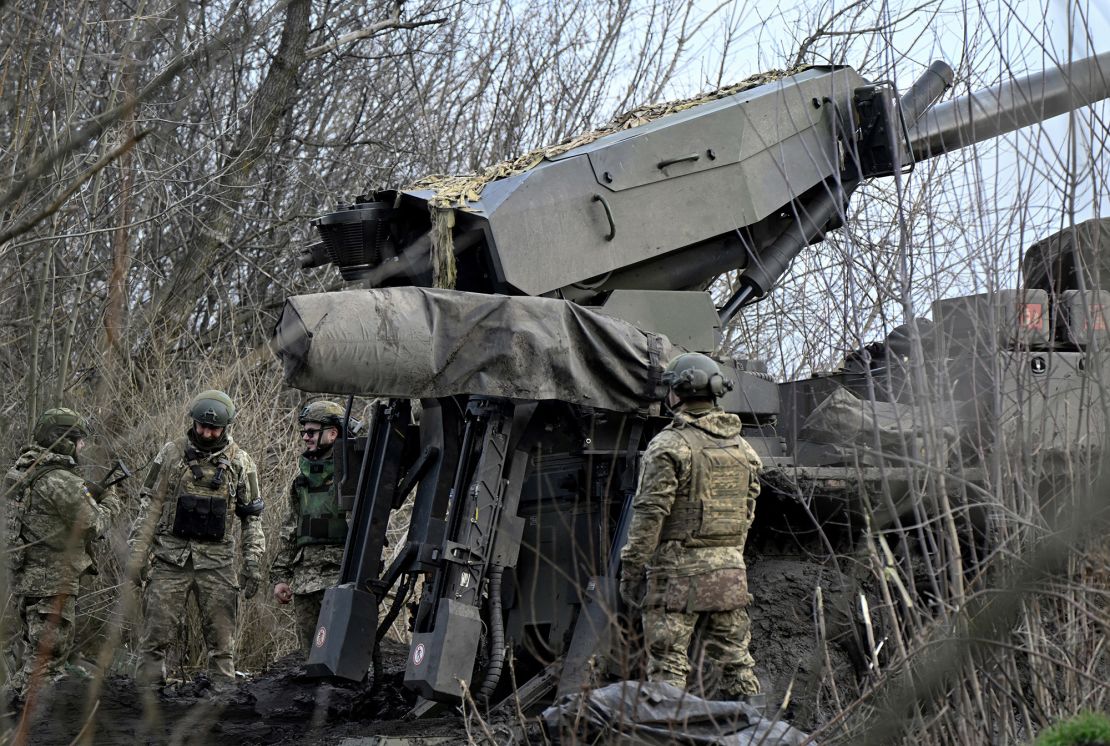
More broadly, Ukraine’s economy also needs to have enough labor to keep functioning.
“Every time you pull a person from the organizational chart of any company to go and serve in the military, you create a disruption. And there is a number after which, research shows, the economy irreversibly collapses,” Tymofiy Mylovanov, head of the Kyiv School of Economics, and a former government minister, told CNN.
Mylovanov said adding even 500,000 additional conscripts would likely leave the economy some way away from that point. But with only 6 million men in the labor force, he said, mobilization is not a lever any government can keep pulling indefinitely.
Away from financial considerations, the economist feels Russia’s recent advances in Avdiivka and other places might make mobilization easier, by increasing each Ukrainian’s sense of responsibility to join the war effort, in spite of the known hardships and dangers.
“It matters what family thinks,” he said. “It’s not just an individual decision.”
Back at the protest outside parliament, the women calling for fairness in mobilization hope that if families do have a voice in this, it means some men can return home soon, just as others are going off to fight for the first time.


